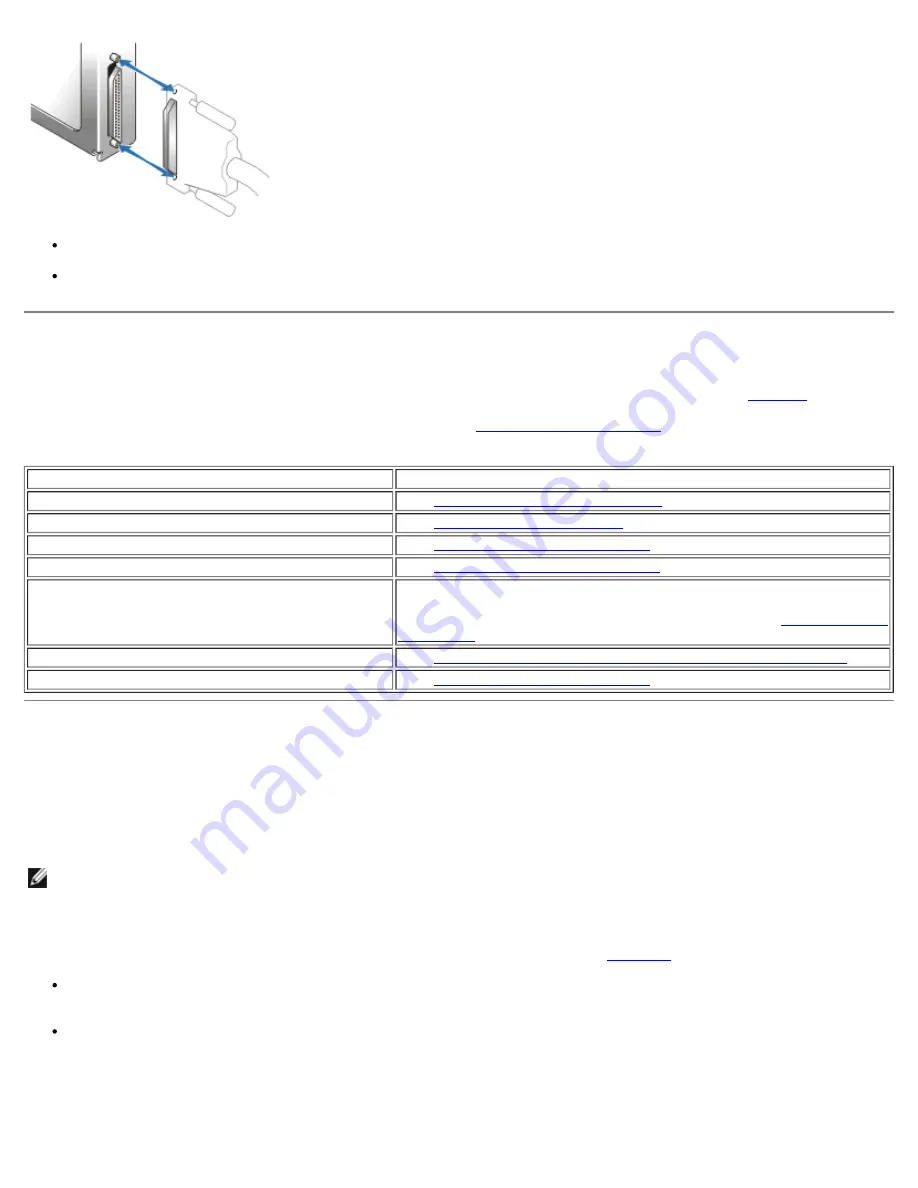
Basic Troubleshooting : Dell PowerVault 220S and 221S Systems Service Manual
file:///C|/Users/rishi_sood/Desktop/220s/en/sm/basics.htm[3/7/2013 12:09:14 PM]
Ensure that the cable connectors are firmly seated before you tighten the captive thumbscrews.
When detaching the cable, avoid damage to the cable by grasping and pulling on the cable connector rather than the
cable. Also, separate the connectors carefully to avoid damage to the connector pins.
Indicators Overview
The LED indicators on your storage system provide valuable information when troubleshooting the system.
Table 10
lists the
most common system and component faults and tells you where to look in this section to find more information on correcting
the problem. For locations and descriptions of LED indicators, see "
Components and Indicators
."
Table 10. Common System and Component Faults
Illuminated Indicator
Corrective Action
Drive status LED (drive failure flash pattern)
See "
Troubleshooting SCSI Hard Drives
."
Shelf-fault indicator only
See "
Troubleshooting the System
"
Shelf-fault indicator and power supply fault indicator See "
Troubleshooting a Power Supply
."
Shelf-fault indicator and cooling fan fault indicator
See "
Troubleshooting a Cooling Module
."
Shelf-fault indicator and over-temperature indicator Use your array management software to check the system temperature.
See your array management software documentation for more
information. If a temperature fault is not indicated, see "
Troubleshooting
the System
."
Shelf-fault indicator and EMM fault indicator
See "
Removing and Installing EMMs and the SCSI Terminator Card
."
None
See "
Troubleshooting a Power Supply
."
Troubleshooting SCSI Hard Drives
Hard-drive problems can be caused by a number of conditions, including problems with the drive itself, other electronics in the
system, or an interface cable.
You can resolve many hard-drive problems by validating your SCSI cable connections as described in your
Installation and
Troubleshooting Guide
.
NOTE:
Not all SCSI cables are interchangeable. For your storage system to function properly, it is recommended that you
use the cables shipped with the system. If you are using other SCSI cables, they must be approved for U160 or U320 use,
whichever applies to your configuration. The U320 cable can be used in a U160 environment, but the U160 is not usable in
a U320 environment.
In the event of a drive failure event, the status LED indicator on the drive carrier (see
Figure 11
) flashes the following patterns:
Predicted failure — The status indicator flashes green, then amber, then off, repeating this sequence every two seconds if
a drive is showing signs of imminent failure.
Drive failure — The status indicator flashes amber four times per second if a drive fails.
Figure 11. Hard Drive Status LED Indicators
1
drive busy LED indicator
2
drive status LED indicator
















































